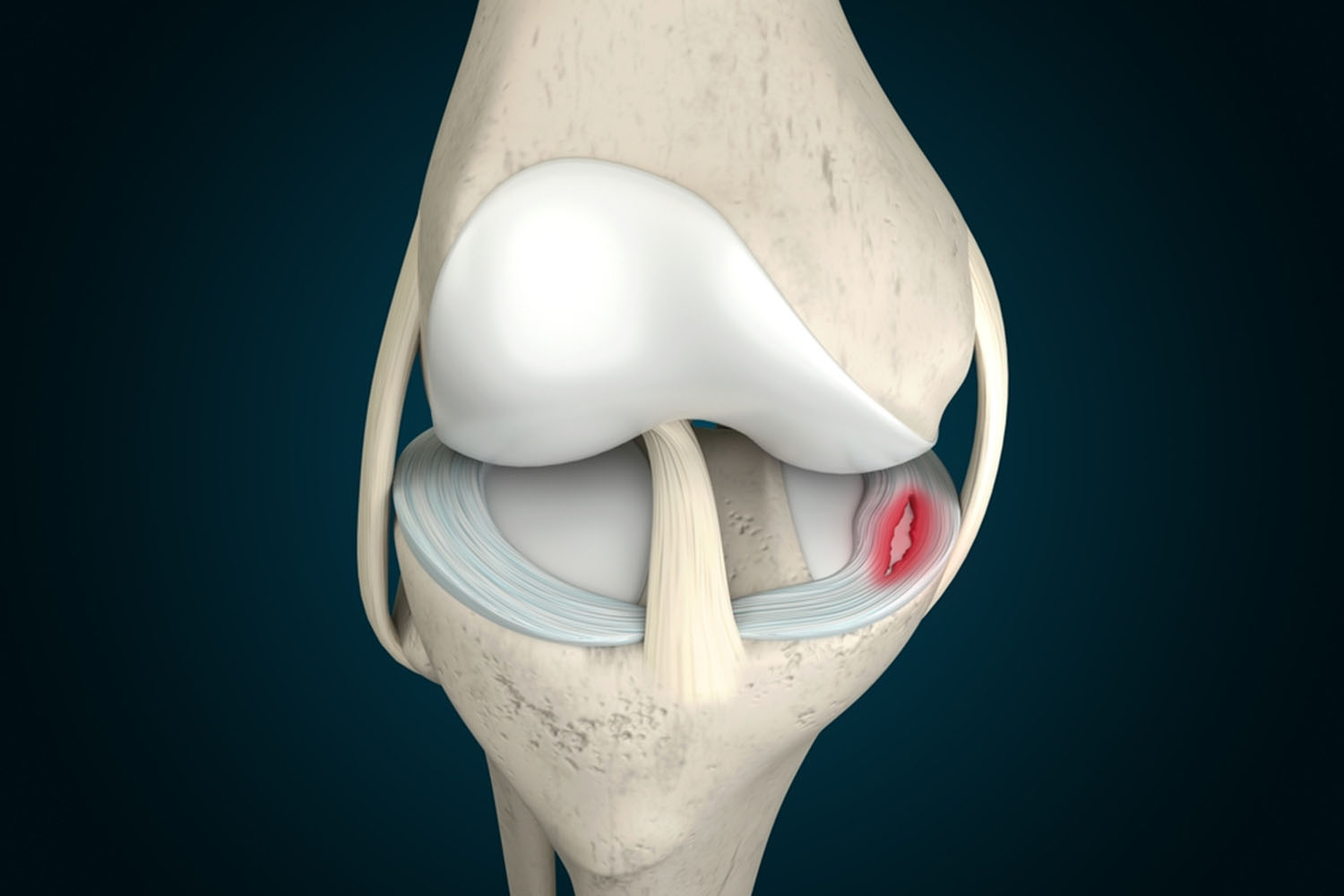Overview
The knee joint, a marvel of engineering, allows us to walk, run, and jump. But sandwiched between the shinbone and thighbone lies a hidden hero: the meniscus. These two wedge-shaped pieces of cartilage act as shock absorbers, keeping our bones cushioned and our movements smooth. Unfortunately, a sudden twist or awkward landing can lead to a meniscal tear, causing pain and instability in the knee.
 What is a Meniscal Tear?
What is a Meniscal Tear?
A meniscal tear is a rip or fray in the meniscus. These tears can happen in various ways:
- Acute Tears: Often caused by a sudden twisting motion while the knee is planted, these are common in sports like football or basketball.
- Degenerative Tears: As we age, the meniscus weakens, making it more prone to tears from everyday activities like squatting or kneeling.
Symptoms of a Meniscal Tear:
The telltale signs of a meniscal tear can include:
- Pain along the inner (medial) or outer (lateral) side of the knee
- Swelling and stiffness
- Catching or locking of the knee joint
- Difficulty fully bending or straightening the knee
- A popping sensation during the injury (in some cases)
International Research on Meniscal Tears
The prevalence of meniscal tears is a global concern. A 2018 study published in the Orthopaedic Journal of Sports Medicine estimated that meniscal tears account for roughly 11% of all emergency department visits for knee injuries.
Thankfully, research is ongoing to improve treatment options. A 2020 study published in Arthroscopy: The Journal of Arthroscopic and Related Surgery compared different surgical techniques for meniscal repair. The research suggests that specific repair methods may lead to better long-term outcomes for younger patients with specific tear patterns.
Treatment Options for Meniscal Tears
The course of treatment for a meniscal tear depends on the severity of the tear, your age, and activity level. Options may include:
- Rest, Ice, Compression, and Elevation (RICE): This initial approach helps reduce inflammation and pain.
- Physical Therapy: Strengthening the muscles around the knee joint can improve stability and support healing.
- Meniscal Repair Surgery: For certain types of tears, especially in younger patients, surgery to stitch the meniscus back together might be recommended.
- Meniscectomy: In some cases, the damaged portion of the meniscus may need to be removed arthroscopically.
The Road to Recovery
Recovery from a meniscal tear can take weeks or even months, depending on the treatment approach. Following your doctor’s rehabilitation plan, including physical therapy exercises, is crucial for regaining full strength and flexibility in your knee.
A meniscal tear can be a frustrating setback, but with proper diagnosis and treatment, you can get back to enjoying an active life. Remember, this blog provides general information, and consulting a healthcare professional for personalized diagnosis and treatment is essential. If you experience persistent knee pain or instability, don’t hesitate to seek medical advice to ensure a speedy recovery.


